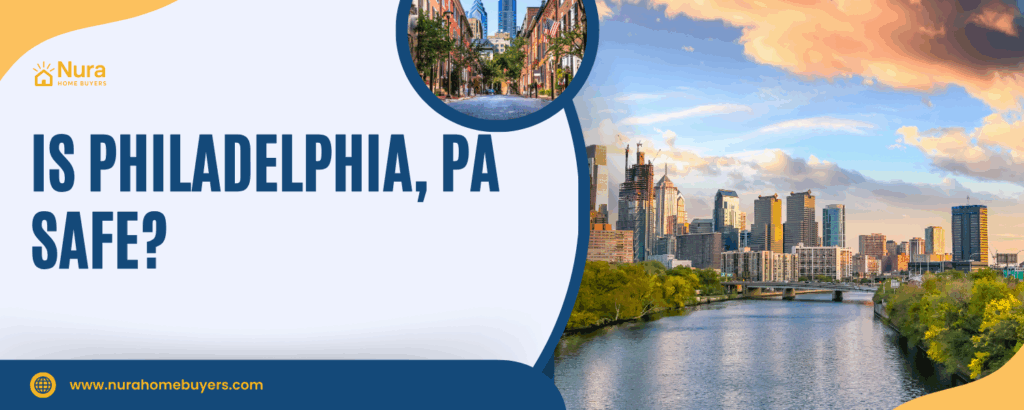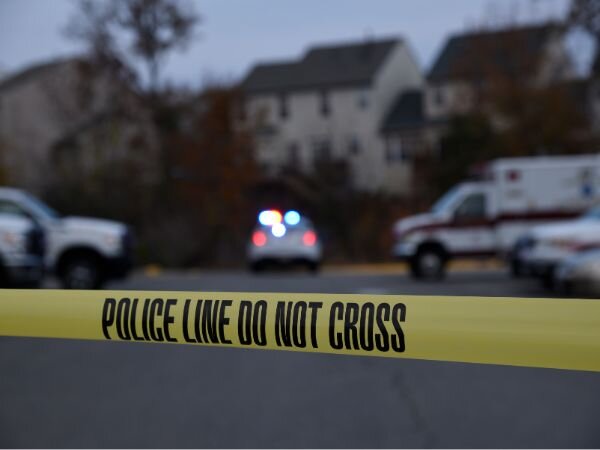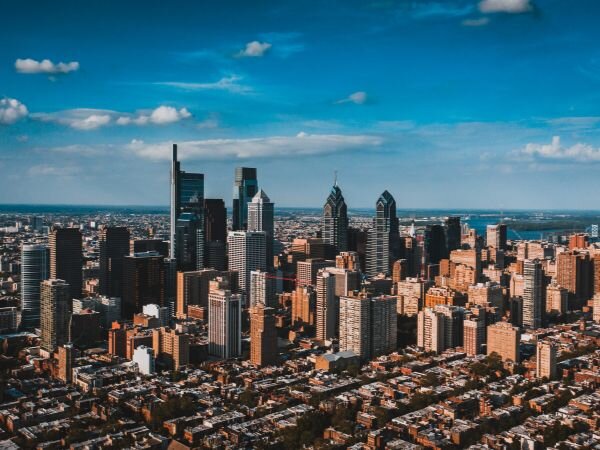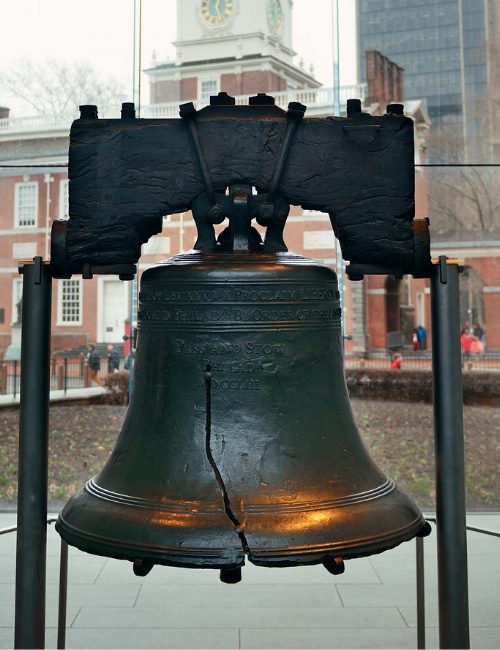
Philadelphia attracts visitors with its rich history and vibrant culture. Locals and tourists worry about safety in 2024. This tool displays Philadelphia’s crime rates and safest neighborhoods. Make sure the city is safe before moving or visiting. Discover why Philadelphia’s safest neighborhoods have less crime.
Brief Overview
Philadelphia’s crime and safety numbers are poor. The city’s history, culture, community ties, and police keep people safe. The Philadelphia Police Department and local groups promote involvement and awareness to prevent crime. This is done with data-driven, neighborhood-focused methods. Chestnut Hill and Society Hill have low crime due to strong community bonds and good police. North Philadelphia must examine its entire system to fix its issues. Crime monitoring makes your town safer for tourists and residents.
Key Highlights
- Philadelphia police use numbers to fight crime.
- Statistics show high property and violent crime rates.
- Social and economic factors strongly impact Philadelphia’s crime rates.
- Community watch and youth programs prevent crime.
Understanding the Philadelphia Crime Landscape
Statistics, trends, and city defenders increase Philadelphia’s crime. Residents and newcomers should check the safest neighborhoods and crime rates. The Philadelphia police are crucial to our city. They protect individuals and reduce crime. This year’s crime figures help the community and teach us how to secure Philadelphia.
The Role of Philadelphia Police in Ensuring Safety

Philadelphia’s crime-fighting strategy relies largely on the police. One of the earliest US police forces is in Philadelphia—many thousands of police labor hard. Besides catching criminals, they help make communities safer and more inclusive. In 2024, they added community-based activities to law enforcement to promote police-citizen relations. Communities that trust each other reduce crime. Philadelphia police improved data-driven policing. Looking at all crime data helps police find hotspots and employ resources more efficiently. This proactive strategy prevents and resolves crime. Predictive policing employs crime data and analytics to prevent crimes. The Philadelphia Police Department practices community-based policing to get to know its residents. Officers attend school, neighborhood, and community events to develop trust. They want to work with locals and the government to make the area safer. If everyone is careful, crime will drop. Training and learning are essential. Modern police training includes advanced negotiating, criminal investigation, and digital forensics. Changes take effect in 2024. These skills help police tackle violent and property crimes and shift crime patterns. Police presence reduces Philadelphia crime. In addition to foot and vehicle patrols, they use surveillance drones and smart GPS devices to monitor suspicious activity. They work together with federal and state agencies to solve tough crimes and protect the neighborhood. In summary, the Philadelphia Police enforce the law and maintain order. Their innovative, adaptive, and community-focused approach keeps Philadelphia a vibrant, safe city.
Analyzing All Crime Data
The examination of all crime data in Philadelphia for 2024 gives a nuanced picture of the city’s safety dynamics. All 2024 crime statistics can help you assess Philadelphia’s safety. The data illustrate crime-fighting triumphs and failures. This section covers property, violent, and other city crimes that harm residents. Every piece of data helps us understand crime and develop effective prevention methods. This year, crime data is easier to get. Modern technologies can map crimes more accurately and provide data in real time. Data technology helps police and the public predict increases. AI in analytics has transformed police response from responding to anticipating, giving them a huge advantage. Media-covered violent crimes changed in 2024. Even while crime rates are still high in some places, the aggregate number of offenses suggests that targeted crime reduction measures are working. Police, city planners, and municipal governments must address societal issues that cause crime. Property crime persists in Philadelphia. In cooperation with police and community watch groups, the city is brightening and improving street surveillance to stop this. People are learning how to keep safe, like calling the police if they spot something strange and installing sturdy locks on their homes. The rise in identity theft and cybercrime in Philadelphia this year has many concerned. Police and residents are collaborating to reduce these crimes. Both individuals and corporations should secure their computers against hackers. People in Philadelphia make the future safer. We need programs that provide kids with employment and activities to deter crime. Crime statistics demonstrate that community gatherings and patrols reduce crime. Monitoring and working together help. Looking into 2024 crime data can help police and the community make Philadelphia safer. The city can reduce crime by discovering new ways to analyze data and engage people. Philadelphia will be safer and united.
A comprehensive assessment of Philadelphia’s crime rates shows various ways to reduce crime:
- Collaborate with police and community leaders on crime-reduction methods that benefit everyone.
- Technology and community education can improve neighborhood watch programs.
- Create online and in-person safety initiatives for everyone.
- Discuss safety issues and find strategies to protect people during frequent community gatherings.
- Help young people in high-crime areas get employment and develop new skills.
- Improve public infrastructure, like lights and security cameras, to reduce crime.
- As cybercrime grows, organizations must have excellent cybersecurity.
These crime reduction strategies will make Philadelphia safer and more active.
Evaluating the Crime Rate in Philadelphia
It’s important to know Philadelphia’s 2024 crime rate because people desire a safer city. Recent data show that property and violent crimes are more difficult than they appear. We require a thorough analysis. NeighborhoodScout can show different city neighborhoods’ crime rates. Safety may be excellent or terrible, depending on Philadelphia’s crime statistics. People moving to new cities or suburbs learn about crime and safety from this study. If you’re considering moving to one of the safer neighborhoods in Philadelphia,Nura Home Buyers can help you sell your current home quickly so you can relocate without delays. Learn more about Our Selling Process.
Trends in Violent and Property Crime

Philadelphia’s violent and property crime rates are improving, but there are still concerns. Research reveals that violent crime will change in 2024. Some places will improve, but others will struggle. Some places are particularly affected by socioeconomic circumstances, which have led to violent crimes, a major issue. Police engage with the community to stop these behaviors in this sensitive scenario. Better training and data-driven policing are essential. They train cops to handle violent crime, which is typical in high-crime areas. Property crimes are distinct. Even though people are trying to stop it, it happens across the city. Police and the community must watch out for these crimes, which occur frequently. Strategic collaborations like NeighborhoodScout assist police in fighting property crimes by providing crime trend data. Philadelphia has improved street lighting and surveillance to reduce property crime. Cybercrime will worsen Philadelphia’s safety in 2024. This transformation requires police and city residents to adapt. Cybersecurity education is needed to stop these huge, hidden crimes. Digital knowledge and safety guidelines are supplementing traditional safety measures as more people steal and commit fraud online. Philadelphia fights crime via sophisticated technology and community-based programs. Young people need jobs and involvement to reduce violent and property crime. The city’s ability to alter crime fighting shows that residents, police, and administration desire to reduce crime. Philadelphians remain upbeat despite the ongoing fight against violent and property crimes. Residents work hard to secure their neighborhoods.
Comparing Crime Rates Across Philadelphia Neighborhoods
NeighborhoodScout says Philadelphia’s crime statistics vary by neighborhood, demonstrating its safety. Some places have improved safety and security, while others have seen substantial crime declines. This difference is often linked to police performance, community involvement, and wealth. Police presence reduces property and violent crime. This shows how important the police focus is. High-visibility patrols and community watch aim to reduce crime. Police have more resources, and firms have a reason to keep the public secure; thus, commercial areas are monitored and responded to faster. Better security and knowledge may reduce property crimes in some areas. Crime may be higher in remote or impoverished areas. Due to historical and societal circumstances, crime is rising; policing alone will not address the problem. Stopping violent and property crime requires social services that help people find jobs, attend school, and develop community relationships. Community leaders and local politicians in Philadelphia value neighborhood surveys for planning. Data analysis may reveal local issues. Information makes intervention efforts more focused and successful. Local youth activities, community clean-ups, and police-citizen forums may encourage citizens to fight crime. These programs work better in safe environments. When planning cities and towns, community input offers people a sense of control over regulations, which may make the region safer. Crime statistics in different parts of Philadelphia show that safety levels can be both an issue and an opportunity to improve things. NeighborhoodScout and community activities show that Philadelphia prioritizes safety. People in their towns work together to keep everyone secure. They do this by making new rules, knowing the region, and paying attention.
Exploring Philadelphia Neighborhoods by Safety
Philadelphia’s safety ratings depend on local, social, and economic factors. Residents in this congested city should know the safest spots. Less crime and more community involvement make certain places easier to live in. This topic discusses avoiding high-crime regions and finding Philadelphia’s safest neighborhoods.
Identifying the Safest Areas to Live
Philadelphia has safe and busy neighborhoods. Safe neighborhoods have vigilant police, robust local businesses, and caring residents. East Falls, Society Hill, and Chestnut Hill are known for minimal crime. These locations have many social events that improve life and unite people. Public spaces are clean, and neighborhood watch programs work. People feel safer when police patrols and good lighting are present because crimes are less likely. The police and Chestnut Hill residents communicate well. The neighborhood patrols, activities, gorgeous gardens, and ancient homes make it feel safe. Community is vital to these groups. This builds community trust and collaboration to fight crime. Recent crime reduction shows how much this strategy has been worked on. Chestnut Hill is a famous Philadelphia neighborhood. East Falls is safe because it’s close to the city but quiet like the suburbs. Residents of this bustling but safe area near colleges and IT businesses can participate in community life. Good community policing and citizen safety reduce crime. Digital technologies like NeighborhoodScout make neighborhoods safer. These tools simplify crime data and safety comparisons, keeping everyone safe. East Falls is safe because it invests in infrastructure. Society Hill makes Philadelphia safer. Famous for its beautiful streets and history. Residents are proud of their areas and willing to help. Social events and meetings improve police-citizen relations. Families and professionals prefer quiet, safe settings. Modern infrastructure and strong public-private cooperation make Society Hill a safe place to live. Some things make Philadelphia’s safest neighborhoods safe. They succeed by funding public welfare, police, and community events. These towns may teach others how to make their neighborhoods safer by displaying safety results. Everyone works together to ensure safety as these neighborhoods learn to know each other and use NeighborhoodScout.
Navigating High Crime Areas: What to Know

People who live, work, or visit Philadelphia should know about its violent neighborhoods. Knowing about these locations can improve and make life safer. North Philadelphia and some West Philadelphia neighborhoods have greater violent and property crime rates despite the city’s efforts. Continuous social and economic issues increase crime in North Philadelphia. Substandard housing, unemployment, and poverty can cause crime. Robberies and attacks are widespread in these areas; be aware. More people are improving their communities, and community activities are busier. Working with police and community watchdogs can improve safety and conditions. Thus, community-led safety and modern police practice are altering perceptions. Local officials say teaching and engaging youth are the best ways to reduce crime over time. Monthly community gatherings allow people to discuss and solve their issues. West Philadelphia has the same issues. College campuses and apartment complexes with many individuals experience higher crime due to wealth disparities and frequent turnover.
Neighborhood associations work hard to make their neighborhoods safer despite these issues. They do this by brightening roads and promoting caution. Safety depends on local business owners working together to protect customers and enterprises. They fund child programs and crime-prevention measures. Because of fear, many people use NeighborhoodScout and other apps to monitor crime in these areas. Residents can utilize this information to stay safe and make wise decisions. As safety changes, Philadelphia must work with the public and private sectors. This includes promoting police visibility, corporate growth, and education. Everyone should be involved in safety choices and discuss how to make these communities safer and more welcoming. We must work hard, include the community, and spend money wisely on local needs to make Philadelphia’s high-crime areas safer. Education and empowerment, community pride and vigilance, and extensive safety strategies are making the city safe and welcoming for everyone.
Philadelphia Neighborhood Safety Tips
Philadelphia neighborhoods are diverse and changing. They must know safety rules to protect residents and tourists. These ideas focus on community-based crime prevention and security. Daily use of these methods and community involvement may make Philadelphia safer for everyone. Safety regulations can help local residents reduce crime and get involved in their neighborhoods.
How to Avoid Crime in Your Daily Life
Philadelphians must be careful, organized, and community-minded to keep safe. People may feel safer knowing what crimes are happening in their city. Monitoring violent and property crime in your area is crucial. NeighborhoodScout helps people improve safety plans and track crime. To understand the threats, you need local and city statistics. Various neighborhoods have various safety levels. Chestnut Hill and East Falls have low crime because residents care about their community and the police work properly. Following these safe neighborhood criteria can keep you safe even in Philadelphia’s most dangerous neighborhoods. Small safety improvements can reduce crime in high-risk areas. Security systems, robust locks, and locked doors and windows deter criminals. You must also watch your belongings in public to prevent theft.
Neighborhood services make people feel safer. Safety courses and neighborhood watch groups provide new skills and keep people safe. Be aware of your surroundings. This means being aware of your surroundings, not using your phone in public, and avoiding dark places, especially at night. Traveling is risky. Use public transportation at crowded, well-lit stations and stay close to others to stay safe. Secure and park your car in a visible, safe location. As urban cybercrime rises, protecting your online data is essential. Finally, community involvement protects you. Everyone gets along better when you talk to your neighbors. Community members can reduce crime by working together. These tips can protect Philadelphians. This prepares the city. If you are trying to avoid risky neighborhoods, selling your Philadelphia House for cash can help you reposition quickly in a safer area.
Community Initiatives to Reduce Crime
Philadelphia community projects reduce crime and improve safety. These efforts often use city and community resources to address crime causes. These programs make neighborhood friends and fund local infrastructure to reduce violence. One of the most popular ways to monitor and report suspicious behavior is through neighborhood watch organizations. These groups cooperate to stop crime; therefore, they work best in high-crime areas. Frequent meetings and patrols help people bond and feel like a community. More people will help safeguard the town. Regional community centers and groups are essential. These groups often offer job training, sports, and school to keep youth out of trouble. In crime-ridden North Philadelphia, programs that help people grow and make money can lower crime rates. Philadelphia police use data-driven policing to determine program tools.
Working together reduces violent and property crimes, as shown. Another way police connect with their communities is through community policing. This is when cops talk to locals. Online safety and cybercrime classes are growing in popularity. Cybercrime is rising in cities; therefore, communities must adapt. Internet risks can be avoided by prioritizing education. Improved physical infrastructure is essential. Cleanliness, security cameras, and street lighting are essential. These changes increase community involvement, improve neighborhood morale, and reduce crime. Finally, companies and community groups are making the area safer. Local groups often receive sponsorship, funding, or security upgrades from businesses. Home and workplace safety is also assured. Finally, Philadelphia police, city officials, and residents collaborate to reduce crime. Engaging, reaching out to schools, and building relationships make neighborhoods safer and more connected. Supporting and expanding these projects can keep Philadelphia neighborhoods secure. This allows its engaged communities to thrive in a safe and caring environment.
Every city has problems, but in 2024, Philadelphia has many safe areas for residents and visitors. If they live in low-crime neighborhoods and participate, residents can enjoy the city’s rich history and dynamic culture without worrying about violence. The City of Brotherly Love’s Chestnut Hill green areas and Society Hill cobblestones can be enjoyed safely and comfortably if you’re aware of your surroundings. Read local safety reports to make the wisest decisions. Investors exploring safe and growing areas in Philadelphia often need to sell properties quickly in Lancaster or Other places in Philadelphia—Nura Home Buyers‘s cash buying service provides a hassle-free solution.
What measures are being taken to improve safety in Philadelphia in 2024?
Neighborhood watch, data-driven policing, community events, and teen initiatives are examples. The Philadelphia Police Department uses predictive policing and wants citizen participation to reduce crime.
Which neighborhoods are considered safest in Philadelphia?
Society Hill, Chestnut Hill, and East Falls are known for minimal crime. These places are safer due to good police work and community involvement.
How does Philadelphia’s police force use data to combat crime?
Crime data helps police allocate resources. Predictive analytics and proactive law enforcement help prevent crimes.
What role do community initiatives play in enhancing safety?
Youth programs and neighborhood watch organizations are community-led crime reduction measures. They reduce crime, make locations safer, and encourage surveillance.
Which resources can residents use to stay informed about local crime trends?
NeighborhoodScout apps illustrate crime patterns. Being informed keeps you safe and involved in your community.
Helpful Philadelphia, PA Blog Articles
- Selling Your House As-Is In Philadelphia
- Closing Costs When Selling A Home In Philadelphia
- Sale Of Your Philadelphia Home Amid Divorce Proceedings
- Selling Your Philadelphia Home Without A Real Estate Agent
- Selling A Foreclosed Home In Philadelphia
- Selling A Probate House In Philadelphia
- Sell Your Philadelphia Home Needing Repairs Without Renovation
- Is Philadelphia, PA Safe
- Philadelphia PA Neighborhood Map
- Free Things to do in Philadelphia, PA
- Best Property Managers in Philadelphia, PA

